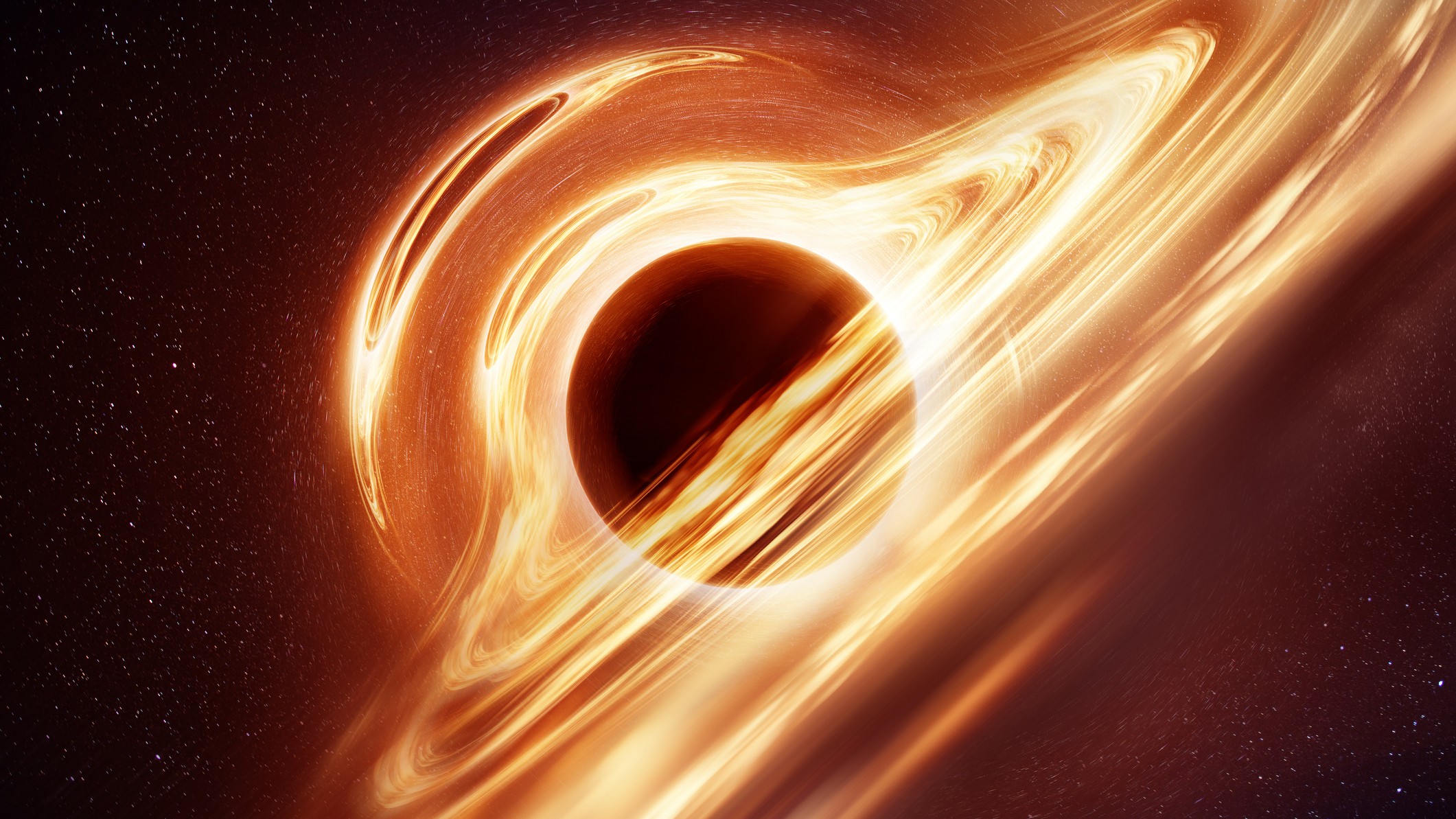Lab-grown black hole may prove Stephen Hawking's most challenging theory right
By using a chain of atoms to simulate a black hole's event horizon, researchers have shown that Hawking radiation may exist just as the late physicist described.

Scientists have created a lab-grown black hole analog to test one of Stephen Hawking's most famous theories — and it behaves just how he predicted.
The experiment, created by using a single-file chain of atoms to simulate the event horizon of a black hole, has added further evidence to Hawking's theory that black holes should emit a faint glow of radiation from virtual particles randomly popping into existence near their boundaries. What's more, the researchers found that most of the light particles, or photons, should be produced around the cosmic monsters' edges. The team published their findings Nov. 8 in the journal Physical Review Research.
According to quantum field theory, there is no such thing as an empty vacuum. Space is instead teeming with tiny vibrations that, if imbued with enough energy, randomly burst into virtual particles — particle-antiparticle pairs that almost immediately annihilate each other, producing light. In 1974, Stephen Hawking predicted that the extreme gravitational force felt at the mouths of black holes — their event horizons — would summon photons into existence in this way. Gravity, according to Einstein's theory of general relativity, distorts space-time, so that quantum fields get more warped the closer they get to the immense gravitational tug of a black hole's singularity.
Because of the uncertainty and weirdness of quantum mechanics, this warping creates uneven pockets of differently moving time and subsequent spikes of energy across the field. It is these energy mismatches that make virtual particles emerge from what appears to be nothing at the fringes of black holes, before annihilating themselves to produce a faint glow called Hawking radiation.
Related: Are black holes wormholes?
Physicists are interested in Hawking's prediction because it is made at the extreme boundary of physics' two grand but currently irreconcilable theories: Einstein's theory of general relativity, which describes the world of large objects, and quantum mechanics, which details the strange behavior of the smallest particles.
But detecting the hypothesized light directly is something astrophysicists are unlikely to ever achieve. Firstly, there are the considerable challenges posed both by traveling to a black hole — the closest known one being 1,566 light-years from Earth — and, once there, not getting sucked in and spaghettified by its immense gravitational pull. Secondly, the number of Hawking photons springing into existence around black holes is thought to be tiny; and in most cases would be drowned out by other light-producing effects, such as the high-energy X-rays spat out from matter swirling around the black hole's precipice.
Sign up for the Live Science daily newsletter now
Get the world’s most fascinating discoveries delivered straight to your inbox.
In the absence of a real black hole, physicists have begun looking for Hawking radiation in experiments that simulate their extreme conditions. In 2021, scientists used a one-dimensional row of 8,000 supercooled, laser-confined atoms of the element rubidium, a soft metal, to create virtual particles in the form of wave-like excitations along the chain.
Now, another atom-chain experiment has achieved a similar feat, this time by tuning the ease at which electrons can hop from one atom to the next in the line, creating a synthetic version of a black hole's space-time warping event horizon. After tuning this chain so that part of it fell over the simulated event horizon, the researchers recorded a spike in temperature in the chain — a result which mimicked the infrared radiation produced around black holes. The finding suggests that Hawking radiation could emerge as an effect of quantum entanglement between particles positioned on either side of an event horizon.
Interestingly, the effect only emerged when the amplitude of the hops transitioned from a few set configurations of flat space-time to a warped one — suggesting that Hawking radiation requires a change in specific energy configurations of space-time to be produced. As the powerful gravity distortions produced by the black hole are absent from the model, what this means for a theory of quantum gravity and for potential naturally-produced real Hawking radiation is unclear, but it nonetheless offers a tantalizing glimpse at previously unexplored physics.

Ben Turner is a U.K. based staff writer at Live Science. He covers physics and astronomy, among other topics like tech and climate change. He graduated from University College London with a degree in particle physics before training as a journalist. When he's not writing, Ben enjoys reading literature, playing the guitar and embarrassing himself with chess.










